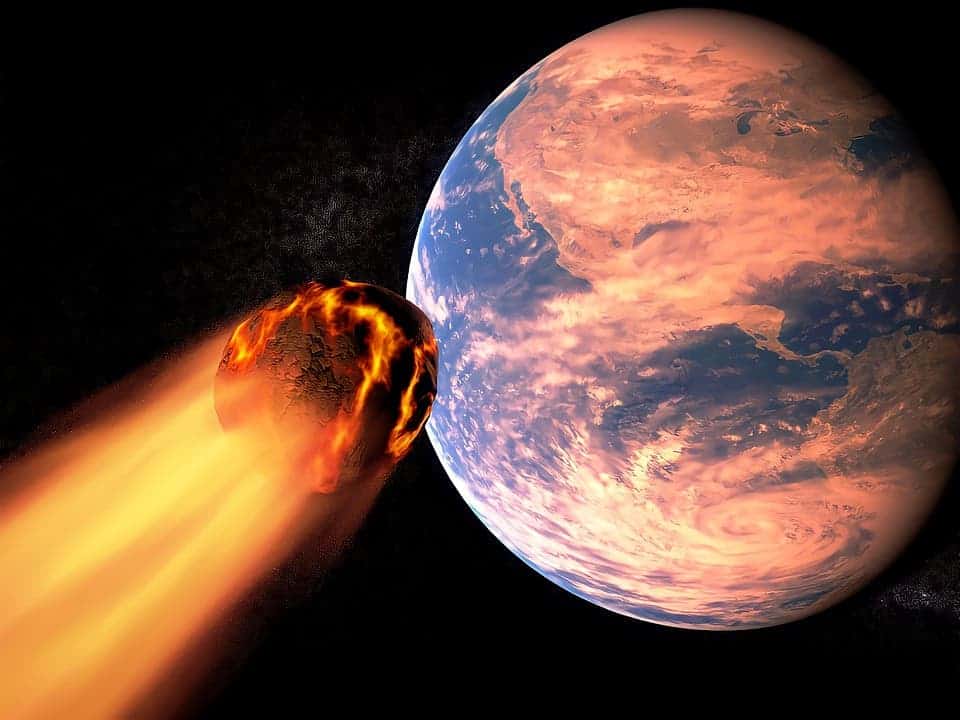
NASA usually does a pretty good job at tracking relatively close asteroids whose paths might cross Earth’s orbit. However, over the weekend a small asteroid about the size of a refrigerator traveled just 3,000 km past Earth — much lower than most communications satellites. No one was hurt and no damage was reported, but the problem is that the entire thing went unnoticed until later after the fact.
The asteroid in question, known as 2021 UA1, represents the third closest asteroid flyby with no impact in recorded history. The two closest asteroid flybys were 2020 QC and 2020 VT4, both of which occurred in the latter half of 2020.
Astronomers estimate that 2021 UA1 has a diameter of only two meters and during its closest approach above Antarctica, it came more than 100 times closer to Earth than the moon. Luckily, it was still much farther away than the manned International Space Station, which orbits Earth at around 400 km above the surface.
Given its small size, if 2021 UA1 had entered a collision path with Earth it would surely have been disintegrated and vaporized by the atmosphere. The last known significant asteroid event happened on February 15, 2013, when a 17-meter-wide asteroid exploded above Chelyabinsk, sending a shock wave that shattered windows across six cities and injuring more than 1,500 people. The Chelyabinsk asteroid was about 20 times larger than 2021 UA1.
But although 2021 UA1 proved to be harmless, the fact that it zipped past us undetected is highly concerning and reveals a huge blind spot in our asteroid monitoring system.
Most of the objects tracked by NASA and other space agencies are in the “front”, meaning their direction of travel is towards Earth and the sun. However, 2021 UA1 came from close to the inner solar system, from the sun towards Earth. Due to the sun’s glare, it is very difficult to spot these asteroids, especially if they approach during the daytime, which was the case in this situation as well.
NASA is learning, though. This recent close shave, as well as other recent asteroid close encounters, are helping scientists to fine-tune their monitoring tech and software. NASA is also planning to launch the Near-Earth Object (NEO) Surveyor space telescope in 2026, which is supposed to orbit between Earth and the Sun. That’s the perfect vantage point to monitor asteroids coming from the sun towards the outer solar system.
Nevertheless, it’s safe to say that asteroid monitoring and deflection are still in their infancy. Mistakes like these are valuable lessons that will help scientists get better with time — as long as it’s not too late and we get sucker-punched by some giant rock.
Even if we detect an asteroid, our technology and response capabilities are woefully lacking. That is why on November 24, NASA plans to perform the Double Asteroid Redirection Test (DART), humanity’s first-ever mission that will test a planetary defense method. The DART spacecraft, which will launch from a SpaceX Falcon 9 rocket, is supposed to travel more than 11 million kilometers and slam into Dimorphos, a 150-meter wide asteroid. Dimorphos is just target practice since it poses no threat to Earth. The idea is to impact the asteroid with enough energy to divert its course by a fraction of a degree, but just enough to make a huge difference millions of kilometers later.
“DART will be the first demonstration of the kinetic impactor technique, which involves sending one or more large, high-speed spacecraft into the path of an asteroid in space to change its motion,” NASA said.
“We’re going to make sure that a rock from space doesn’t send us back to the Stone Age,” Thomas Statler, a NASA scientist, said during a NASA podcast.
Was this helpful?



